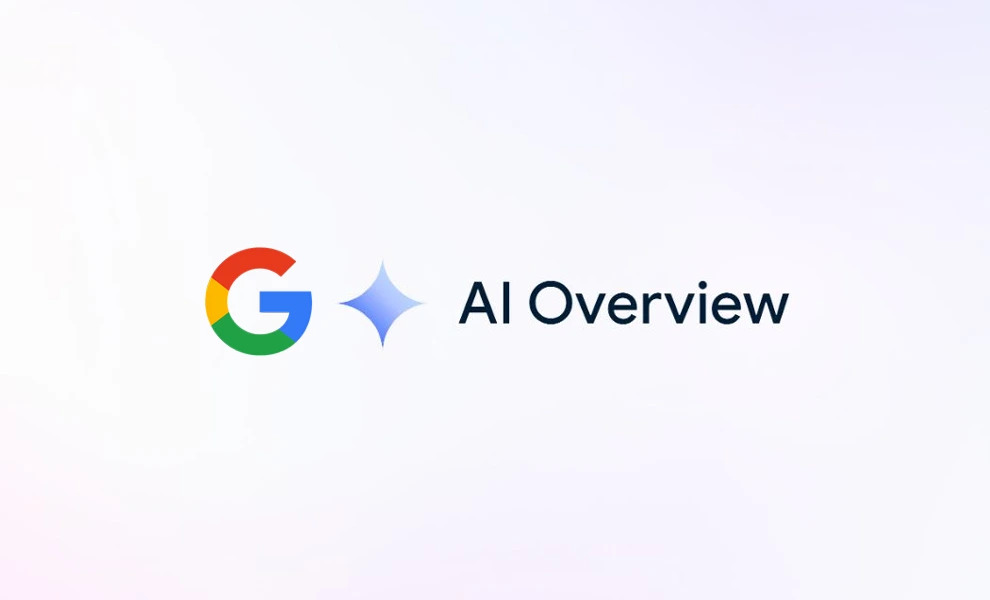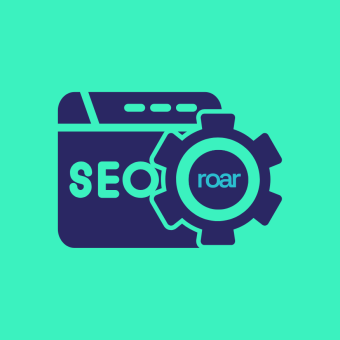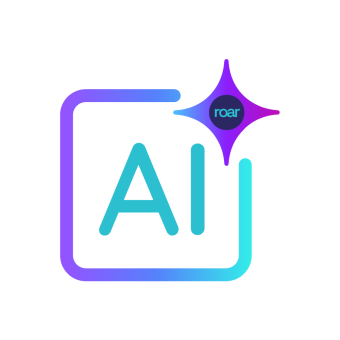Google’s AI-generated summaries are now the default, and if you’re not showing up, you’re not getting traffic. This guide explains what AI Overviews are, why they’re shaking up SEO, and exactly how UK marketers should adapt their content strategy to stay on top.
What are AI Overviews?
Google’s AI Overviews are replacing traditional SEO rankings, and most marketers aren’t ready. If your content isn’t appearing in these AI-generated summaries, you’re effectively invisible. Here’s why it’s happening – and how to fix it before your competitors do.
Start by getting to grips with the basics of AI , this will ensure you understand how LLMs work and what Google is looking for in it’s AI Overviews.
Marketers across the UK are witnessing a seismic change in how search visibility works. Google’s Search Generative Experience (SGE) now delivers a conversational, AI-written response at the top of many results pages, pulling from multiple sources to summarise a query in real-time.
This behaviour is mirrored by Bing Copilot and ChatGPT’s browsing capabilities, all of which curate high-confidence, no-click answers to user queries. These models aren’t just scanning your site, but they’re interpreting, summarising, and deciding what to display.
If you’re not being cited in these AI panels, you’re not in the conversation.
From blue links to curated answers
For over two decades, SEO success was defined by ranking high in organic listings: the “blue links” of Google’s front page. But today, AI Overviews sit above those listings, often removing the need for users to click through.
Quote to Note: “46% of queries ended without a click in January – almost half!” Semrush, May 2025
It’s not just for simple queries either. We’re seeing AI summaries serve product comparisons, how-to walkthroughs, and even local service recommendations. All areas that were previously dominated by traditional SEO and paid ads.
Why this shift demands a new SEO strategy
This is not a cosmetic UX upgrade. It’s a structural change in how discoverability works.
Old SEO playbook:
- Build backlinks
- Target high-volume keywords
- Write long-form content
- Optimise titles/meta tags
New AI playbook:
- Deliver structured, modular content
- Lead with direct, answer-first statements
- Optimise for semantic comprehension (NLP-friendly formatting)
- Demonstrate E-E-A-T (Experience, Expertise, Authoritativeness, Trust)
Roar Tip: Understanding this shift now gives your brand a first-mover advantage. We help clients restructure pages to match AI search behaviour, not just Google’s legacy algorithms via GEO optimisation.
Why your business isn’t showing up
AI doesn’t read pages the way humans do
AI doesn’t browse, it scans. SGE, Copilot and similar tools extract content based on structure, clarity, and machine-readable signals. Your flowery intros, marketing fluff, or buried answers? They don’t grab attention.
Instead, AI Overviews prioritise:
- Short, declarative answers
- Bullet lists and FAQ formats
- Clear authorship and source trustworthiness
Long-winded introductions and bloated formatting? They’re likely to get skipped.
Where traditional SEO falls short in AI environments
You may be unknowingly optimising your site away from AI-readiness. Here are common errors:
- Rambling intros without clear answers
- Headlines that don’t match user intent
- No structured data (schema)
- Missing author credentials
- Thin content with outdated examples
- No FAQ, bullet lists, or comparison tables
Even if you’re ranking organically, these gaps can block you from appearing in the AI overviews.
Symptoms you’re invisible to AI systems
How do you know if AI is ignoring your content?
Diagnostic Indicators:
- You rank on page one, but don’t appear in AI summaries
- Competitor content is cited on Google overviews, but yours isn’t
- Your featured snippets or “People Also Ask” spots are vanishing
- Organic traffic is stable, but leads are declining
The anatomy of AI optimised content
Immediate clarity: Why the first sentence matters
Google AI overviews prioritise clarity over creativity. That means your page needs to open with a clear, 20–30-word statement that answers the search query directly.
Example:
“To rank in Google AI Overviews, your content must provide a direct answer, structured formatting, and high trust signals through E-E-A-T and schema markup.”
Think of this as your “AI snippet” equivalent of a meta description. If your intro is vague, AI will pull from a competitor who summarises it simpler.
Format matters: Lists, FAQs and semantic structure
AI Overviews love predictability. Structured formats allow models to identify, extract, and summarise information confidently.
How to Optimise for AI Overviews:
- Open with a direct answer (within 30 words)
- Use H3s that mirror search queries (e.g., “How do I rank in AI Overviews?”)
- Include FAQs and TL;DR summaries
- Add schema markup: FAQPage, Article, Author
- Cite trusted sources and link externally
What still matters in SEO (and what doesn’t)
Keyword intent vs. contextual relevance
In the era of AI-generated summaries, search engines are no longer just parsing strings; they’re interpreting meaning. That’s why keyword stuffing and rigid focus on exact-match terms have lost effectiveness, (but anyone still doing that in 2025 has bigger problems than AI visibility).
What remains critical is intent alignment. Your content needs to anticipate and answer the broader semantic scope of a query. For example, a page about “how to optimise content for AI Overviews” should also naturally address related terms like “AI ranking factors”, “AI search SEO”, and “answer engine optimisation”.
Link building is more about trust than volume
AI-generated summaries favour content that has been validated through consistent trust signals. This includes being referenced on authoritative industry websites, cited in relevant news outlets, or associated with verified professionals.
While link volume still matters, the emphasis has shifted toward link context and topical alignment. A single link from a respected publication in your sector can outperform dozens from low-relevance directories.
Technical SEO that helps AI understand your site
Technical SEO has never been more important, but its role has evolved. The focus now is on making your site machine-readable, fast, and structurally sound for AI systems to confidently extract your content.
Essential practices include:
- Applying correct schema markup for article, author, FAQ and organisation
- Ensuring your sitemap is comprehensive and clean
- Enabling fast load times, particularly on mobile
- Using consistent canonicalisation to avoid duplication
- Structuring alt text with contextual relevance, as AI does parse visuals when available.
Getting started with AI search optimisation
Auditing your existing content for AI friendliness
Not all content needs a rewrite. Start by reviewing your top-performing or high-potential pages and assessing them against key AI-readiness criteria:
- Does the opening paragraph provide a clear, direct answer to the main query?
- Are headers written as questions or intent-based phrases?
- Do pages include elements AI can summarise: bullet points, FAQs, tables?
- Is there evidence of author credibility?
- Are schema elements present and functioning?
Building a future-proof content template
Going forward, every new page should be built to be understood and cited by AI systems from day one.
We recommend:
- Opening each post with a 20–30-word direct answer
- Using consistent, semantic headers (especially H2s and H3s)
- Embedding a short TL;DR summary section for quick scanning
- Including FAQ blocks with structured data
- Ensuring every page is tied to a named expert with a verifiable background
- Publishing and updating content regularly to stay current
Tools to track AI Overview performance
Monitoring AI visibility is still emerging as a metric, but forward-thinking teams are already adopting tools to track it.
Use:
- Google Search Console (beta users may see SGE performance insights)
- Third-party SEO platforms like Semrush or Ahrefs to monitor changes in featured snippets and PAA placement
- AI-specific tracking tools that report on generative summary inclusion and citation sources
- Manual analysis using ChatGPT or Bing Copilot queries to see who’s being surfaced
AI search is already here
Google search AI Overviews and other generative summaries are live, active, and impacting every SERP in real time. The shift from blue links to AI-curated answers is permanent.
Marketers who treat this as a future trend are already behind.
Why the most agile brands will win
Brands that are structurally and editorially prepared for AI visibility are already capturing the next generation of organic traffic.
These companies:
- Rework their content based on AI comprehension, not human assumptions
- Implement trust-building structures throughout their digital presence
- Test, track, and refine with SEO that goes beyond keywords
The opportunity is wide open, but it won’t stay that way for long.
Take the top spot in AI search?
If your competitors are appearing in AI Overviews and you’re not, they’re winning the clicks, the leads, and the attention.
Get in touch today to see how you can boost your visibility and get back to the top of Google.



